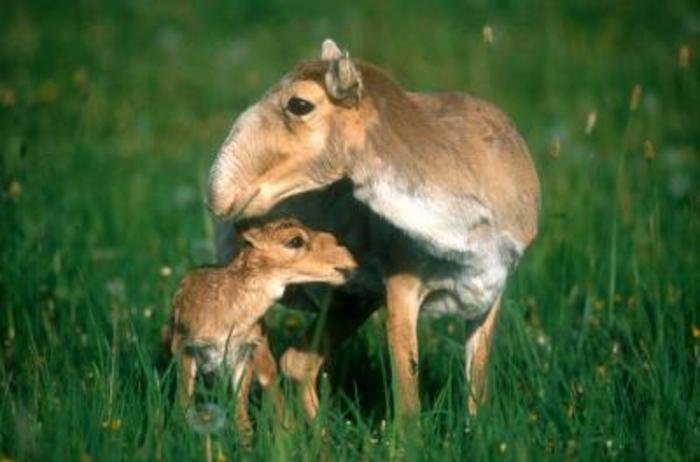Some of Central Asia's most spectacular and least-known large mammals including the saiga, pictured here, are being adversely affected by a sharp increase in goat herds for the cashmere trade.
Credit: Joel Berger/WCS
NEW YORK, July 24 (UPI) -- Some of the planet's rarest large mammals may become "victims of fashion" as the cashmere trade threatens ecosystems, U.S. conservationists say.
Expanding goat herds meant to increase profits for the cashmere trade in Western markets could see wildlife icons from the Tibetan Plateau to Mongolia suffer, the Wildlife Conservation Society reported Wednesday.
Species at risk include the snow leopard, wild yak, chiru, saiga, Bactrian camel, gazelles, and other already endangered species of remote Central Asia, the society said in a release.
Goats from this region produce high-quality fibers that, when processed into cashmere, are highly sought by western consumers.
The growth in goat herds is bringing increasing conflicts with pastoralists, predation by dogs on wildlife, retaliatory killing of snow leopards preying on goats and displacement of wildlife away from critical food habitats, experts said.
A study has used date from fieldwork in India, western China, and Mongolia and builds upon economic data including herder profits, changes in livestock numbers, and the relative abundance of wildlife, researchers said.
"The consequences are dramatic and negative for iconic species that governments have signed legislation to protect, yet the wildlife is continually being squeezed into a no-win situation," said lead study author Joel Berger, a biologist for the society and professor at University of Montana.
"Herders are doing what we would do -- just trying to improve their livelihoods, and who can blame them?"
Conservationists are urging a dialog among the garment industry, cashmere herders and wildlife groups to address and mitigate the impacts.
"In the absence of commitment across global and local scales, the iconic wildlife of the world's highest mountains and great steppes will cease to persist as they have for millennia," Peter Zahler, the society's deputy director for Asia programs, said.
"Rather than serving as symbols of success, these species will become victims of fashion."















